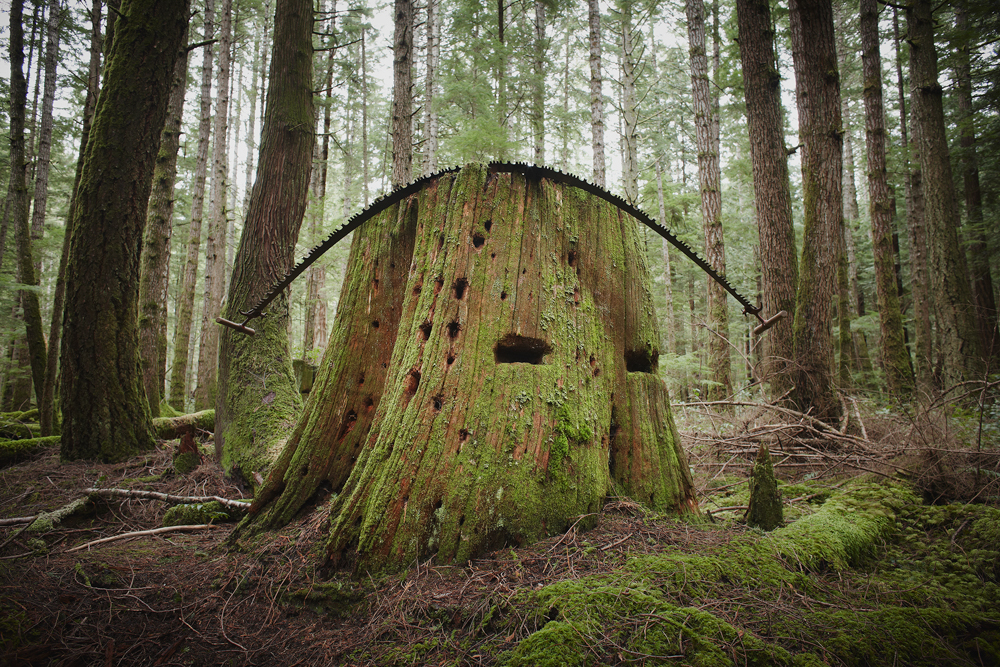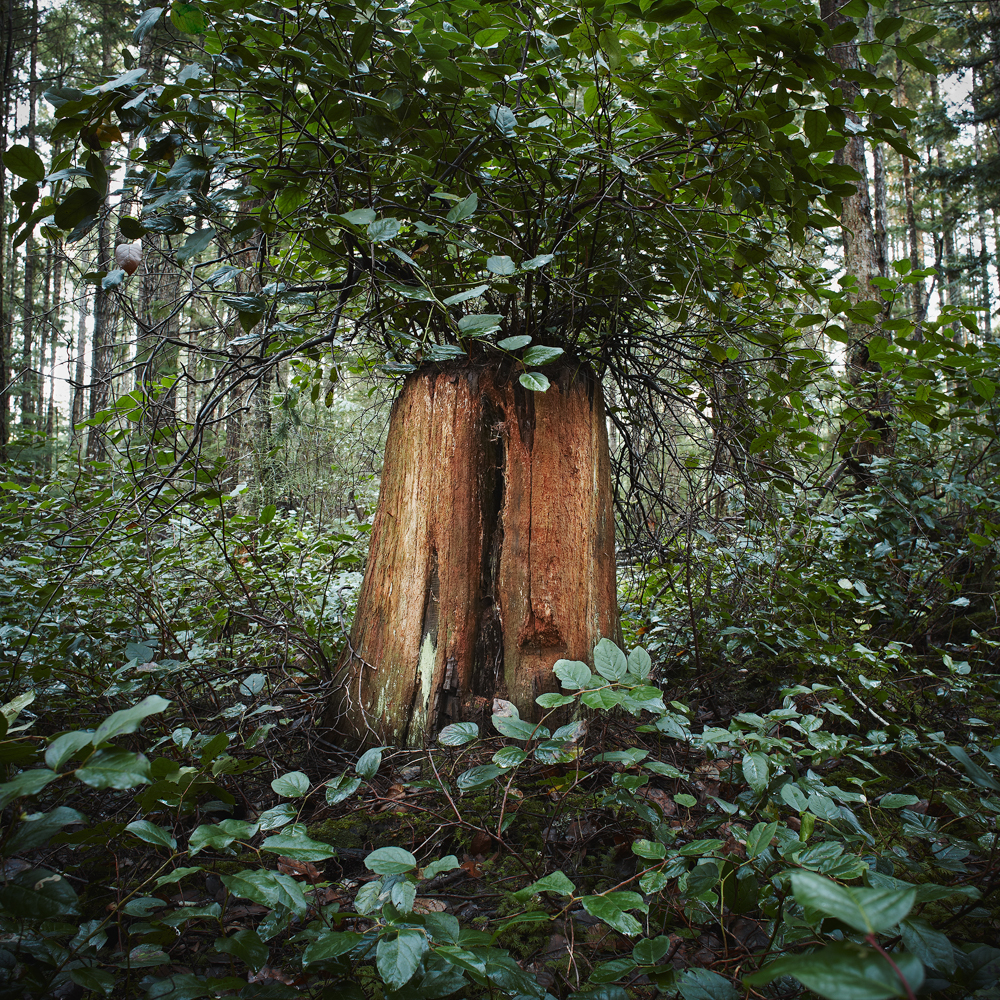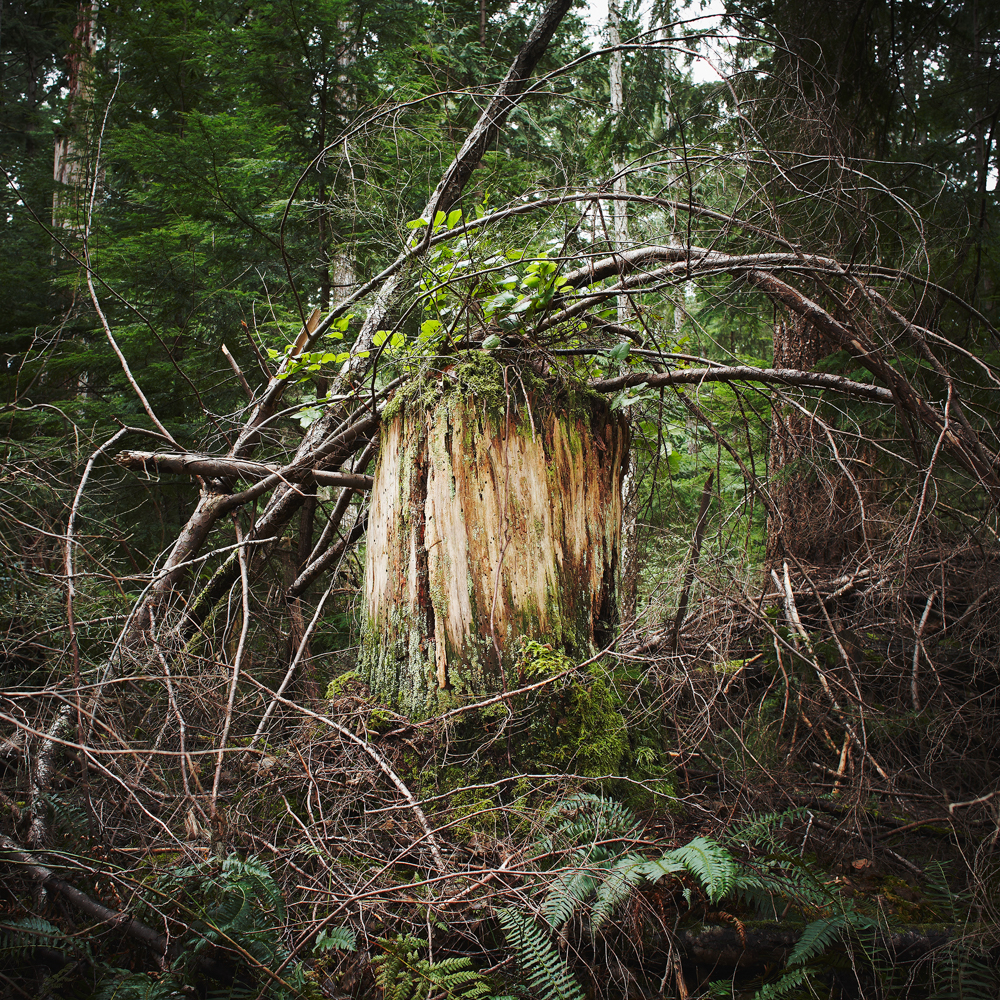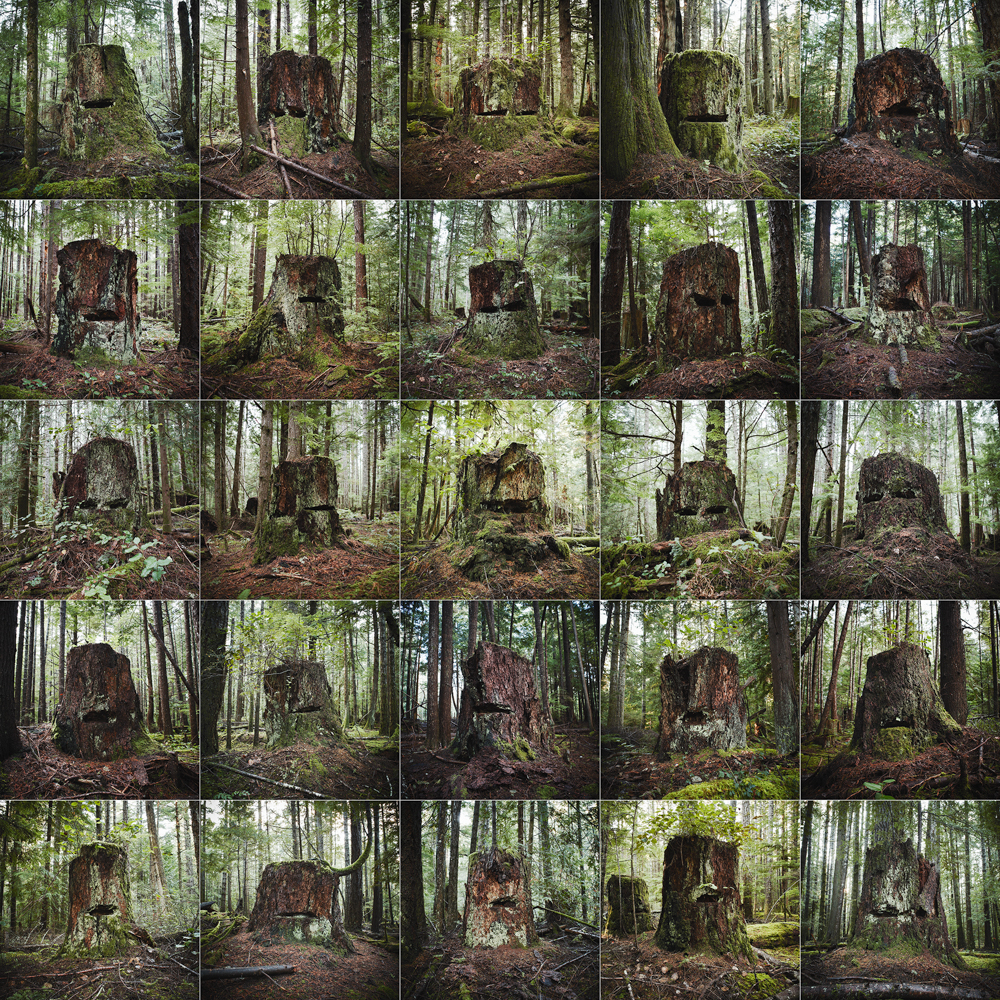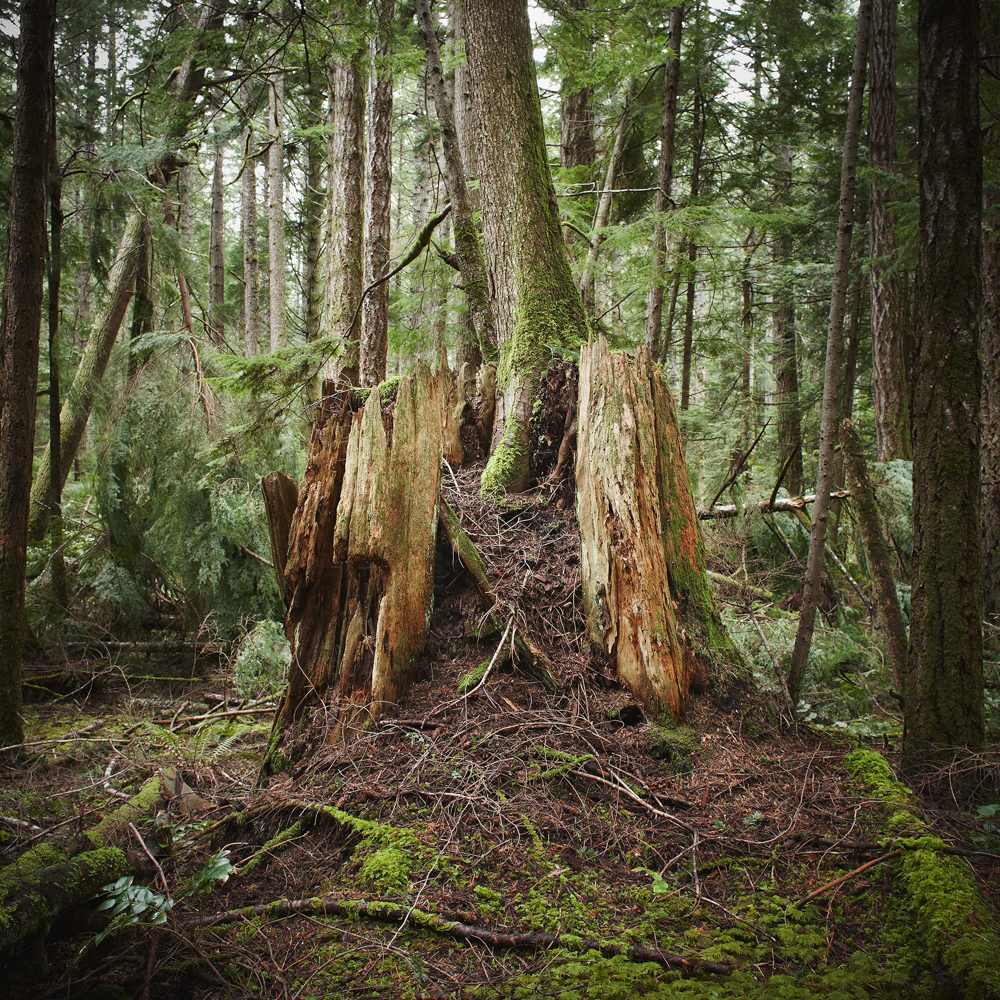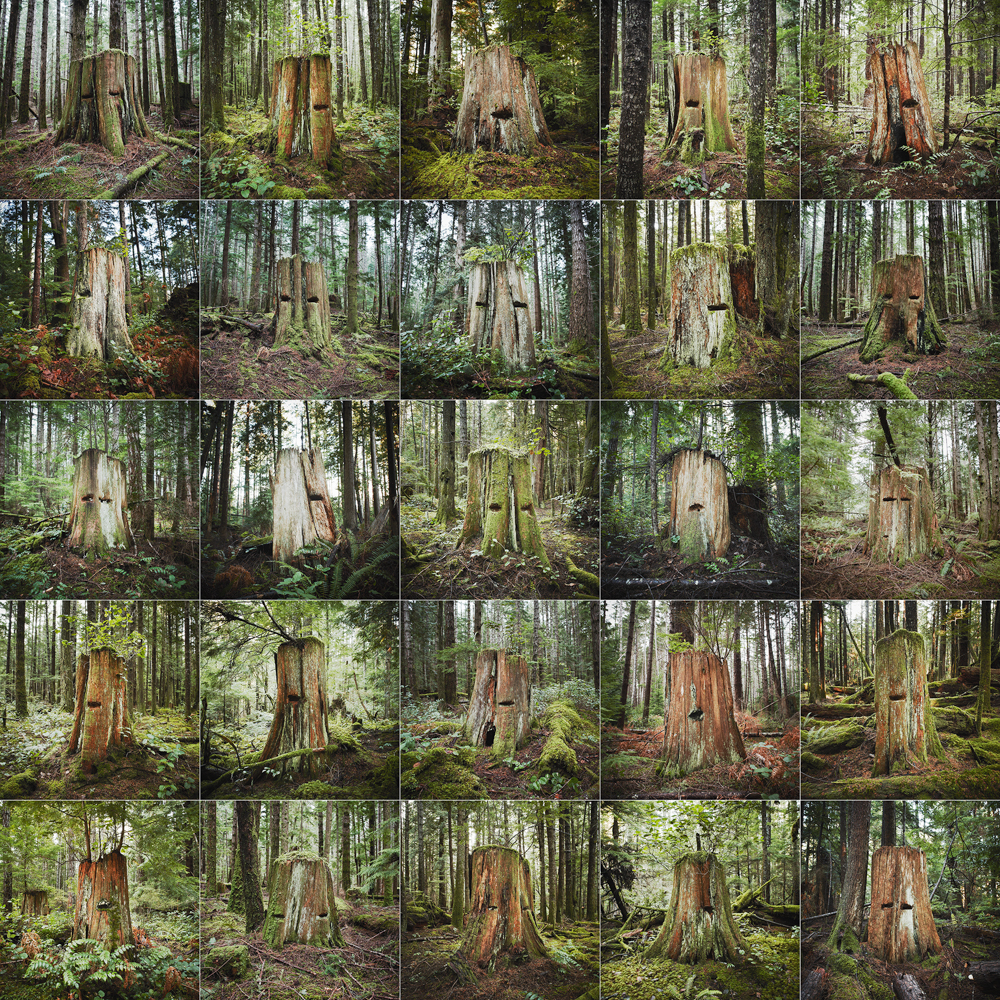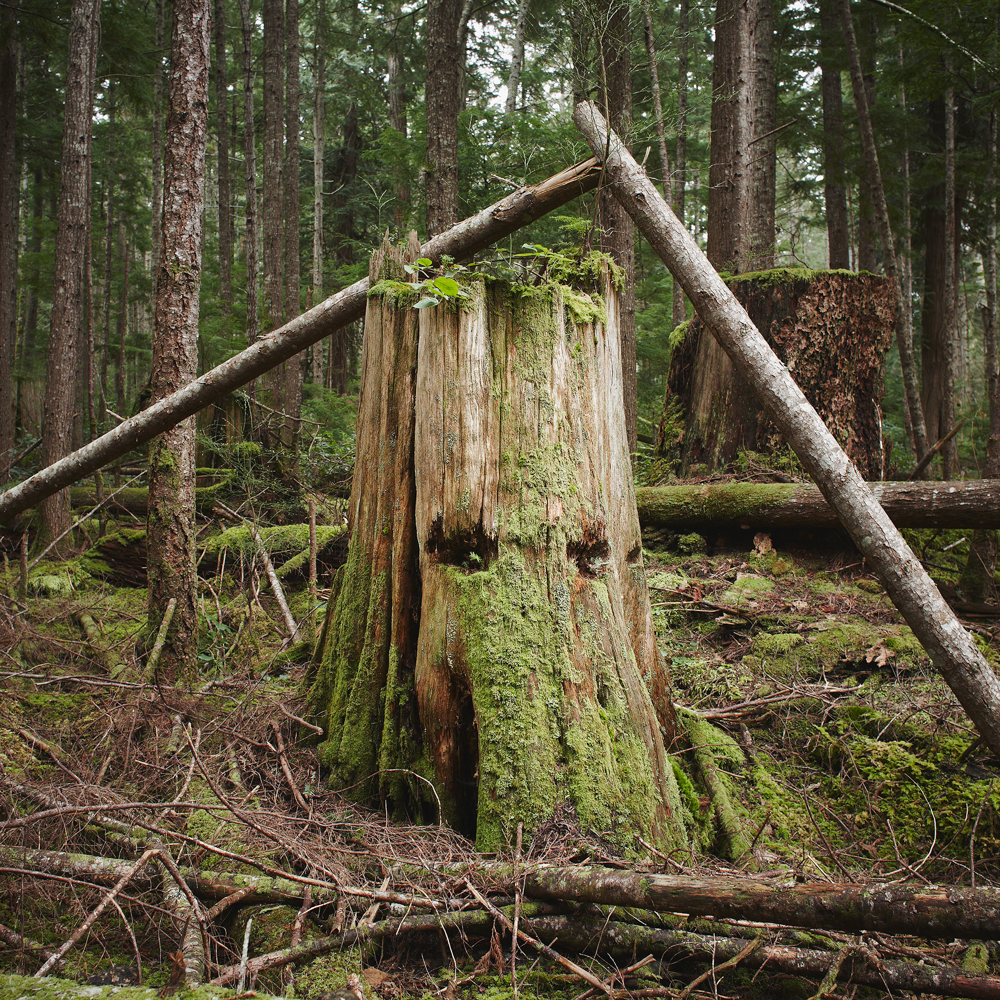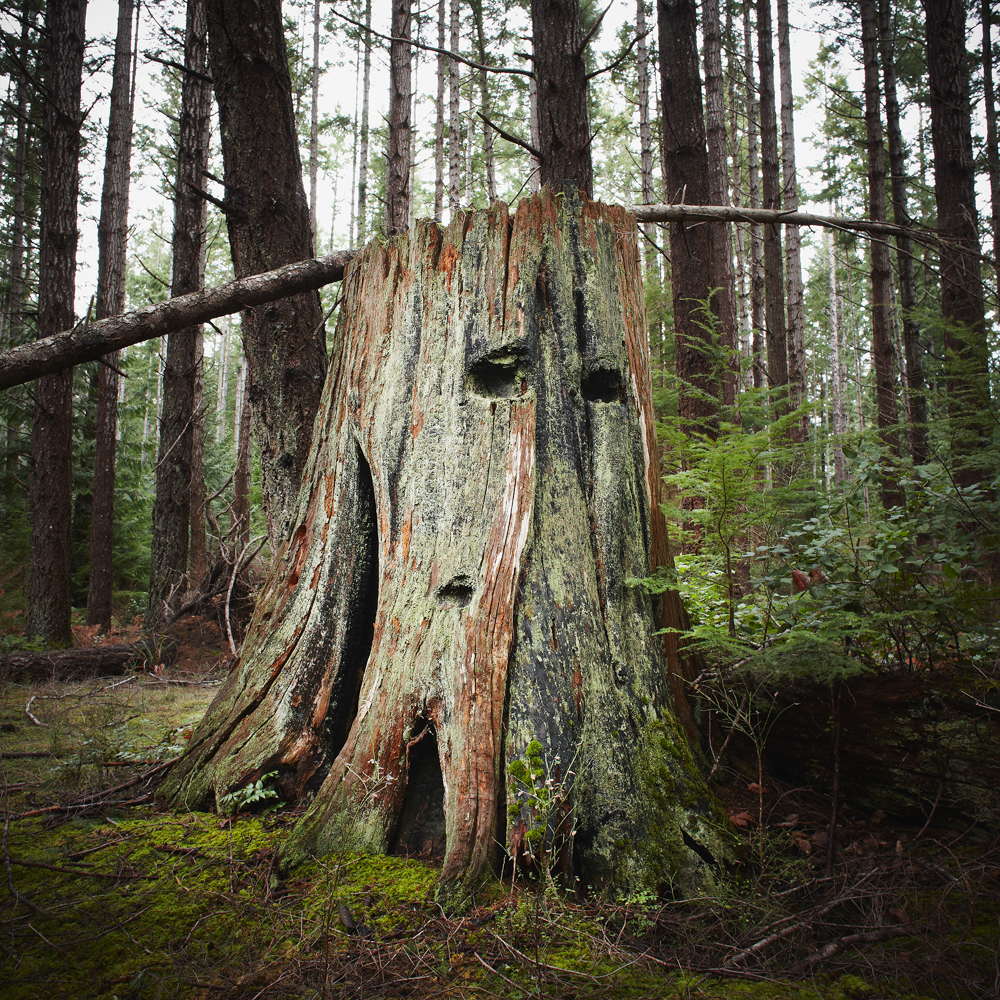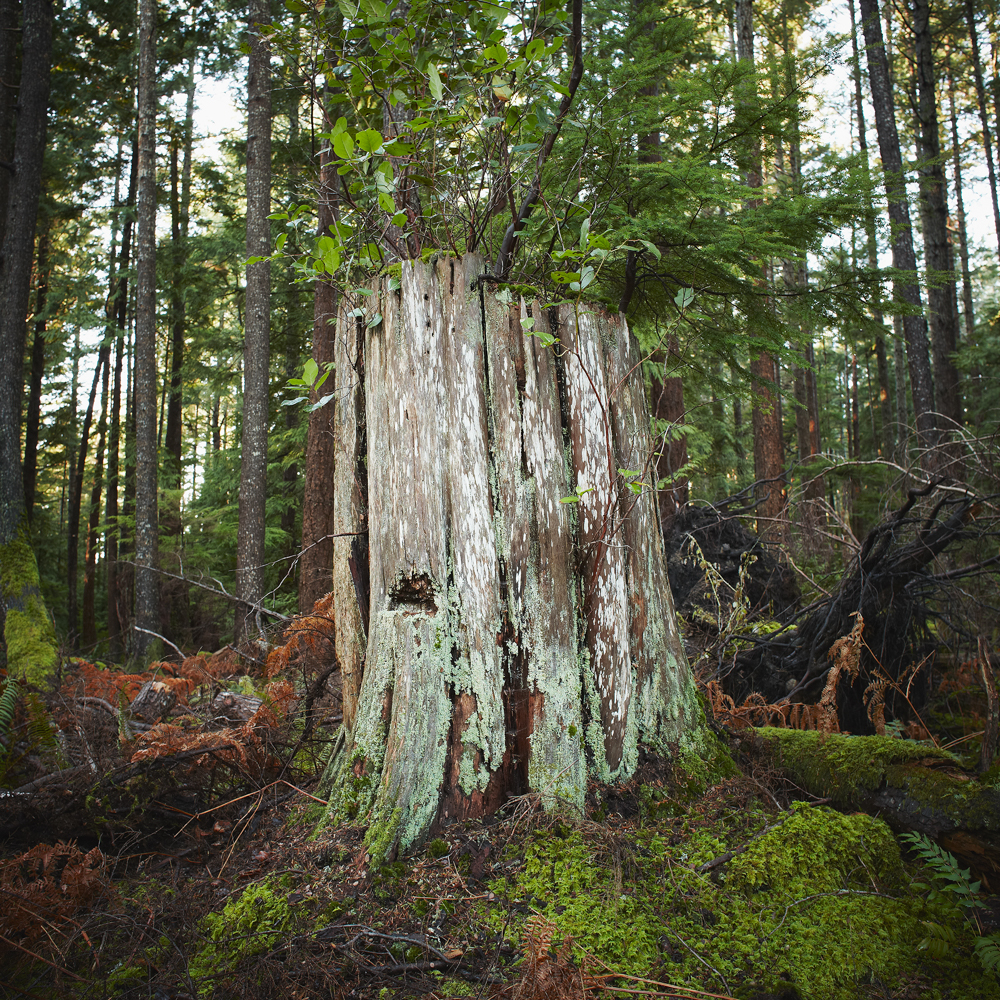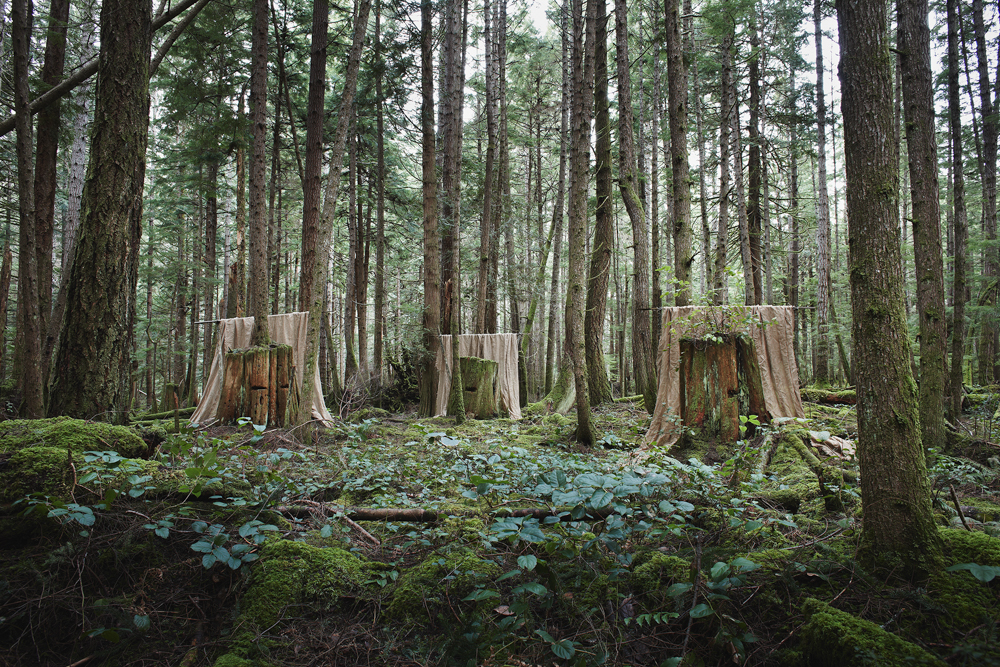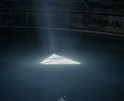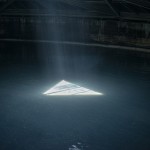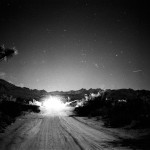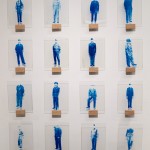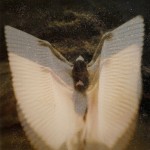Earth Week: David Ellingsen: The Last Stand
As a youngster on Cortes Island, in Canada’s Pacific Northwest, I walked daily through the woods to catch the school bus, passing by remnants of the old growth forest. These giant looming stumps, peering through the second growth trees as far as I could see, seemed an ominous presence. They have always remained in my memory. – David Ellingsen
These bodies of work are linked by this thematic lens: making the often-invisible nature of the global climate and the ecological crisis more visible using conceptual, lens-based art techniques. Each body of work speaks to a different aspect of the climate and ecological crisis: sea level rise; coral bleaching; habitat loss and environmental destruction; deforestation; melting glaciers; plastic pollution.
David Ellingsen is a Canadian photographer creating images of landscapes, staged installations, and object studies that speak to the relationship between humans and the natural world. Across his varied projects Ellingsen acts as both archivist and surrealist while investigating and implementing hybrids of photographic process that span much of the history of the medium. He works predominantly in long-term projects with a focus on climate, biodiversity and the forest.
Ellingsen’s photographs have been exhibited around the world and are part of the permanent collections of the Chinese Museum of Photography, South Korea’s Datz Museum of Art and Canada’s Beaty Biodiversity Museum. They have been shortlisted for Photolucida’s Critical Mass Book Award, awarded First Place at the Prix de la Photographie Paris and the International Photography Awards in the USA.
Recent exhibitions include China’s Lishui Museum of Art, the San Jose Institute of Contemporary Art, Lithuania’s Kaunas Photo Festival and Canada’s Campbell River Museum.
Ellingsen began his career as a freelance assignment photographer with clients that included the New York Times Magazine, the Oprah Winfrey Network, People magazine, CBC Radio Canada, BC Place Stadium and MTV/Nickelodeon. Simultaneously, he was exhibiting personal work within public and private galleries in Canada, the USA, and Asia and appearing as an educator at post-secondary institutions in British Columbia. Ellingsen continued this hybrid path for 12 years and then, in 2013, focused fully on his artistic practice.
Ellingsen lives and makes his work in Canada’s Pacific Northwest, moving between Victoria and the remote island of Cortes where he was raised.
Follow David on Instagram: @davidellingsenphoto
The Last Stand
From falling old growth trees to creating local sustainable harvest initiatives, five generations of my family have been, and are, a part of the forest industry. My great grandfather and great uncle, in providing for their families and future, fell many of the trees whose remnants you now see in these photographs. It was in this familial context, filtered through contemporary environmental issues and thoughts of my own responsibilities, that the seeds of this series were sown. At the beginning this project served as a meditation on these icons from the human-altered landscape but soon evolved into a metaphor for the natural world that supports me, the contemporary globalized culture I am an active part of, and the essential incompatibility of the two. The cognitive dissonance arising from this dilemma of participation in, and yet responsibility for, the fouling of one’s own nest was a dominant theme guiding the creation of these photographs. This discomfort, resulting from holding two conflicting beliefs or ideals, and perhaps more importantly where it leads one, remains a key motivator in my work. Although the pattern of progress and disaster has been repeated throughout human history, the urgency I now feel in our globalized world is one of scale…a scale said to be so vast, perhaps nearing a point of no return. No doubt evolution is progressing as it should, which brings some measure of comfort, yet I cannot help but feel apprehension for the life my family will lead in the not-too-distant future.
Beginning in 2009 and ending in 2015, this project began with straight documentation of the stumps – portraits, if you will. Their compilation into large grids, with reference to Berndt and Hilla Becher’s industrial works, was an attempt to exhibit not only comparison and categorization, but scale. As the forest has regenerated to some degree it is now difficult to see more than perhaps a dozen stumps at a time with the naked eye. As these grids took shape, the impact of the large scale clear cuts of almost 100 years ago became apparent in a way I could not photograph as effectively in a single image.
In addition to the large grids I finished with a collection of 120 photographs to select from for the final exhibition but quickly realized it needed another element. So next came the installations.
Using original period equipment from my father and our island museum gave me a visual and emotional connection to the labour of my great grandfather and great uncle. Influences from environmental artists such as Andy Goldsworthy also contributed to this part of the production, along with the visual cues of shrouds, mummification and bandages and provided a guide as the photographs materialized.
Michael O. Snyder is a photographer and filmmaker who uses his combined knowledge of visual storytelling and conservation to create narratives that drive social impact. Through his production company, Interdependent Pictures, he has directed films in the Arctic, the Amazon, the Himalaya, and East Africa. His photojournalism work has been featured by outlets such as National Geographic, The Guardian, and The Washington Post. He is a Portrait of Humanity Award Winner, a Society of Environmental Journalists Member, a Pulitzer Center Grantee, and a recent delegate to the United National Climate Conference. He holds an MSc in Environmental Sustainability from the University of Edinburgh, Scotland and a BSc from Dickinson College, Pennsylvania. He lives in the shadow of the Blue Ridge Mountains of Central Virginia.
Follow Michael O. Snyder on Instagram: @michaelosnyder
Posts on Lenscratch may not be reproduced without the permission of the Lenscratch staff and the photographer.
Recommended
-
The 2024 Lenscratch 3rd Place Student Prize Winner: Mehrdad MirzaieJuly 24th, 2024
-
One Year Later: Nykelle DeVivoJuly 19th, 2024
-
One Year Later: Anna RottyJuly 18th, 2024
-
The Paula Riff Award: Minwoo LeeJuly 17th, 2024
-
Anastasia Sierra and Carrie Usmar: Talking MotherhoodJuly 16th, 2024

